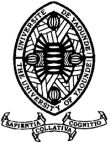Intérêt de la Procalcitonine et de la CRP pour Discriminer les Fièvres chez les Enfants Suspects de Paludisme Grave à Libreville : Étude Pilote
DOI:
https://doi.org/10.5281/hra.v2i2.5264Keywords:
PCT, CRP, Malaria, Non-Malaria Febrile Illness, GabonAbstract
RÉSUMÉ
Introduction. Le but de cette étude était d’étudier l’intérêt de la procalcitonine (PCT) et de la protéine C réactive (CRP) associé à la goutte épaisse pour discriminer les étiologies des fièvres non palustres dans une population d’enfants hospitalisés pour suspicion de paludisme grave dans un service de Pédiatrie à Libreville. Méthodologie. Nous avons mené une étude pilote, transversale, observationnelle au service de pédiatrie de de l’Hôpital Régional Estuaire Melen (HREM) durant la période allant de septembre à novembre 2020. Tous les enfants âgés de 6 mois à 10 ans présentant une fièvre aigue suspecte de paludisme grave étaient inclus. Les résultats du dosage des biomarqueurs, de la numération leucocytaire et du diagnostic microscopique du paludisme ont été analysés. Résultat. Au total, parmi les 185 enfants hospitalisés, 51 (27,6%) ont pu bénéficier des quatre examens biologiques. Leur âge médian était de 38 [16-58] mois. Parmi ces enfants fébriles, 13 avaient une infection plasmodiale, 9 avaient une suspicion de co-infection et 29 avaient une infection non-palustre. Le taux médian de PCT était plus élevé en cas de paludisme isolé et plus faible dans le groupe de patient ayant une fièvre non palustre (p<0,01). La proportion d’enfants ayant une CRP élevée était comparable et supérieur à 50% dans les trois groupes. Seule la PCT était significativement corrélée à la densité parasitaire (Rho=0,22 ; p=0,02). Conclusion. Le dosage de la PCT et la numération leucocytaire devraient être associés à la goutte épaisse ou aux TDR paludisme pour discriminer les fièvres non palustres chez les patients ayant une GE négative.
ABSTRACT
Objective: The aim of this pilot study was to investigate the value of measuring procalcitonin (PCT) and C-reactive protein (CRP) in addition to malaria test to discriminate non-malaria febrile illness (NMFI) in a population of febrile children hospitalized for a suspicion of complicated malaria in the Pediatric Department in Libreville. Methodology. We conducted a pilot, observational and cross-sectional study in the pediatrics department of the HREM during the period from September to November 2020. All children aged 6 months to 10 years old presenting with acute fever suspected of complicated malaria were included. Biological results of biomarker assays, leukocyte counts and blood smears for malaria diagnosis were also analyzed. Results. Among the 185 febrile patients hospitalized, 51 (27,6%) had all the four biological test results. Their median age was 38 [16-58] months. Among these febrile children, 13 had a plasmodial infection, 9 had a co-infection and 29 had a non-malarial infection. The median PCT level was higher in malaria and lower in the NMFI groups respectively (p<0,01). The proportion of children with elevated CRP was comparable and above 50% in all three groups. Conclusion. PCT and leukocyte count should be associated with malaria diagnosis to discriminate NMFI among the febrile patients with a negative blood smear.
Downloads
Published
How to Cite
Issue
Section
License
Authors who publish with this journal agree to the following terms:
- Authors retain copyright and grant the journal right of first publication with the work simultaneously licensed under a Creative Commons Attribution License CC BY-NC-ND 4.0 that allows others to share the work with an acknowledgement of the work's authorship and initial publication in this journal.
- Authors are able to enter into separate, additional contractual arrangements for the non-exclusive distribution of the journal's published version of the work (e.g., post it to an institutional repository or publish it in a book), with an acknowledgement of its initial publication in this journal.
- Authors are permitted and encouraged to post their work online (e.g., in institutional repositories or on their website) prior to and during the submission process, as it can lead to productive exchanges, as well as earlier and greater citation of published work










